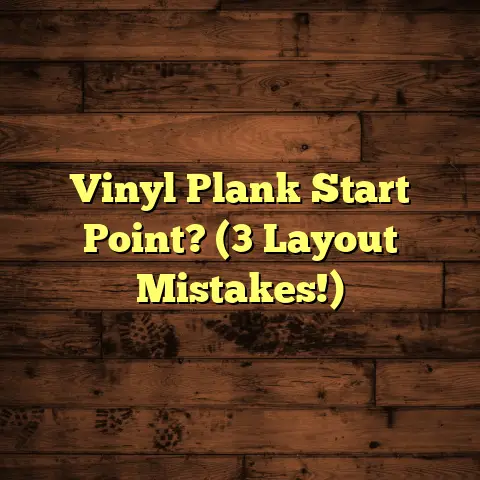Cost to Refinish Hardwood Floors in Kenya
Refinishing hardwood floors is a popular choice for homeowners in Kenya looking to restore the beauty of their flooring. This process can breathe new life into old, worn-out floors, making them look as good as new. However, understanding the costs associated with refinishing hardwood floors is crucial for any homeowner considering this investment.
This comprehensive guide will explore the major cost factors, price breakdowns, comparisons with alternative flooring options, and other vital considerations to help you make informed decisions.
Overview of Major Cost Factors
The cost of refinishing hardwood floors can vary significantly based on several factors:
1. Area Size
The total square footage of the area to be refinished plays a crucial role in determining the overall cost. Larger areas will naturally incur higher labor and material costs. For example, refinishing a small room may only involve a few hundred dollars, while a larger space or an entire home can easily run into thousands.
2. Hardwood Type
The type of hardwood used affects the refinishing cost. Different wood species have varying hardness levels, appearance, and market prices. Common hardwood types in Kenya include:
- Teak: Known for its durability and water resistance, teak is a premium choice often used in high-end projects.
- Mahogany: Valued for its rich color and grain, mahogany provides a luxurious finish but can be more expensive.
- Oak: A common choice that balances cost and durability, oak is widely available and comes in various finishes.
- Pine: While softer than other hardwoods, it can be an affordable option for those on a budget.
Each type has its unique characteristics and associated costs.
3. Labor Costs
Labor is one of the most significant components of the refinishing process. Skilled workers are required to ensure the job is done correctly and safely. Labor costs can vary depending on location, expertise, and demand. In urban areas like Nairobi or Mombasa, labor costs might be higher due to increased demand.
4. Additional Considerations
- Floor Removal: If there are existing coverings (like carpets) or if the floor needs to be removed, additional costs will be incurred.
- Subfloor Replacement: Damaged subfloors may need replacement, adding to the overall expense.
- Material Grade: Higher-grade materials typically cost more but can enhance durability and aesthetics.
- Room Size/Layout: Complex layouts may require more labor and time, increasing costs.
- Installation Type: Different installation methods (nail-down, glue-down, floating) have varying costs associated with them.
Detailed Cost Breakdown
Average Cost Estimates
The following estimates provide a general understanding of what to expect when refinishing hardwood floors in Kenya:
- Basic Refinishing: KSh 120 – KSh 300 per square meter
- Moderate Refinishing (with minor repairs): KSh 300 – KSh 600 per square meter
- Extensive Refinishing (significant repairs, stains, etc.): KSh 600 – KSh 1,200 per square meter
These prices can fluctuate based on the factors mentioned above.
Cost for Different Project Sizes
| Project Size (Square Meters) | Basic Refinishing (KSh) | Moderate Refinishing (KSh) | Extensive Refinishing (KSh) |
|---|---|---|---|
| 20 | 2,400 | 6,000 | 12,000 |
| 50 | 6,000 | 15,000 | 30,000 |
| 100 | 12,000 | 30,000 | 60,000 |
This table illustrates how costs can escalate with increased project size and complexity.
Breakdown of Additional Costs
In addition to the base refining costs, homeowners should consider several potential additional expenses:
- Repairs: If your floor has damaged boards that need replacement or repair (KSh 100 – KSh 400 per board), this will add to your total.
- Staining: If you want a specific stain applied to your hardwood floors after sanding them, this could add KSh 100 – KSh 300 per square meter.
- Finishing: The type of finish (oil-based vs. water-based) can also impact the overall cost. Oil-based finishes are generally more expensive but durable (KSh 200 – KSh 400 per liter), whereas water-based finishes dry faster and are less odorous but may not provide the same depth of color (KSh 150 – KSh 300 per liter).
- Miscellaneous Supplies: Additional materials such as sandpaper (KSh 1,000 – KSh 2,000), sealants (KSh 200 – KSh 500), and cleaning products may also factor into your budget.
Comparison with Alternative Flooring Options
When considering refinishing hardwood floors, it is essential to compare costs with alternative flooring options:
1. Laminate Flooring
- Cost: KSh 1,500 – KSh 3,500 per square meter
- Durability: Less durable than hardwood but more resistant to scratches and moisture.
- Aesthetic Appeal: Can mimic hardwood but lacks the authenticity and warmth.
Pros:
- Easy to install and maintain.
- Resistant to fading and staining.
Cons:
- Cannot be refinished like hardwood.
- May feel less authentic underfoot.
2. Vinyl Flooring
- Cost: KSh 1,200 – KSh 2,800 per square meter
- Durability: Highly resistant to water and stains.
- Aesthetic Appeal: Available in various designs but may not match the warmth of real wood.
Pros:
- Good for high-moisture areas like kitchens and bathrooms.
- Available in various textures and colors.
Cons:
- Less durable than hardwood in high-traffic areas.
- May emit VOCs (volatile organic compounds) if not properly manufactured.
3. Carpet
- Cost: KSh 800 – KSh 2,500 per square meter
- Durability: Can wear out more quickly than hardwood and requires regular cleaning.
- Aesthetic Appeal: Offers warmth but may not have the same resale value as hardwood.
Pros:
- Soft underfoot; adds warmth and comfort.
- Variety of colors and styles available.
Cons:
- Stains easily; requires regular cleaning.
- Not suitable for those with allergies due to dust accumulation.
Signs That Hardwood Floors Need Replacement
Knowing when to refinish or replace your hardwood floors is essential. Here are some signs indicating a need for replacement:
1. Severe Scratches and Dents
If there are deep scratches that cannot be sanded away or if the floor has sustained significant dents from heavy furniture or traffic, it may be time to consider replacement instead of refinishing.
2. Cupping or Warping
Damage from moisture that has altered the shape or structure of the wood requires immediate attention. Cupping occurs when the edges of the boards are higher than the center due to moisture absorption.
3. Extensive Cracking
Large cracks that compromise the integrity of the floor pose safety hazards and indicate significant wear that may not be repairable through refinishing alone.
4. Persistent Stains
Stains that cannot be removed with cleaning or that seep into the wood can diminish the aesthetic appeal of your flooring. If stains are too numerous or deep-set, replacement might be necessary.
5. Age of Flooring
If your hardwood floors are nearing or beyond their expected lifespan (typically around 50 years), it might be beneficial to consider replacement over refinishing.
Pros and Cons of Hardwood Flooring
Pros
- Aesthetic Appeal: Adds warmth and beauty to any space; hardwood floors can enhance both traditional and modern home designs.
- Durability: With proper care, hardwood floors can last for decades; they resist wear and tear better than many alternatives.
- Increases Home Value: Hardwood flooring is a sought-after feature for many homebuyers; investing in quality hardwood can yield a significant return on investment.
- Versatility: Available in various species and finishes; homeowners can choose styles that suit their tastes and home decor.
- Allergen-Friendly: Unlike carpets, hardwood does not trap dust mites or allergens, making it a healthier choice for indoor air quality.
Cons
- Cost: Initial investment can be higher than other flooring options; refinishing costs must also be considered over time.
- Maintenance: Requires regular upkeep to maintain appearance and durability; neglecting maintenance can lead to costly repairs.
- Susceptible to Water Damage: Can warp or swell if exposed to excessive moisture; spills must be cleaned promptly to prevent damage.
- Noise: Hardwood floors can be noisier than carpeted surfaces; soundproofing measures may need to be taken in some situations.
- Temperature Sensitivity: Wood can expand or contract with temperature changes; this may lead to gaps or buckling if not properly acclimated before installation.
Professional Installation vs. DIY
Cost Differences
Professional installation typically costs between KSh 100 – KSh 300 per square meter. While DIY can save money, it requires specific skills and tools.
Tools Needed for DIY
If you decide to take on the refinishing project yourself, here are some essential tools you will need:
- Sanding Machine: Essential for removing old finish and leveling the surface.
- Floor Buffer: Used after sanding to smooth out any rough spots before applying finish.
- Edging Tool: Necessary for reaching corners and edges that standard machines cannot access.
- Vacuum Cleaner: Important for cleaning up dust generated during sanding.
- Stain Applicators: Brushes or pads designed for even application of stain or finish.
Skills Required
While some homeowners may have the confidence to tackle a DIY project, it’s important to recognize that refinishing hardwood floors requires precision and skill:
- Understanding how to properly sand without damaging the wood.
- Knowing how to apply stain evenly for a smooth finish.
- Familiarity with different types of finishes and their application techniques.
Importance of Proper Installation
Improper installation can lead to issues such as buckling, squeaking, or uneven wear over time. Hiring professionals ensures a quality finish that enhances durability.
Questions to Ask Hardwood Flooring Contractors
When hiring a contractor for refinishing your hardwood floors, consider asking the following questions:
General Experience
- What is your experience with hardwood floor refinishing?
- Can you provide references or examples of previous work?
- Are you licensed and insured?
Project-Specific Queries
- What is included in your estimate?
- How long will the project take?
- What type of finishes do you recommend?
- Will you handle floor removal if needed?
Cost and Materials
- Can you break down the costs associated with labor, materials, and additional services?
- Do you offer any warranties on your work?
Hardwood Floor Care and Maintenance Tips
To maximize the longevity of your hardwood floors:
- Regular Cleaning: Sweep or vacuum regularly to remove dirt and debris; use a microfiber mop for damp cleaning.
- Use Proper Products: Avoid harsh chemicals; use products specifically designed for hardwood cleaning.
- Humidity Control: Maintain consistent humidity levels (between 30% – 50%) using humidifiers or dehumidifiers as needed.
- Avoid Excessive Water: Clean spills immediately; avoid mopping with excess water as it can seep into seams and cause damage.
- Use Mats and Rugs: Place mats at entrances to reduce dirt and wear; area rugs in high-traffic zones can also protect against scratches.
Understanding Different Finishes
The finish applied during refinishing can significantly affect both appearance and durability. Here’s a breakdown:
Oil-Based Finishes
- Durability: Offers a hard surface that withstands wear well; ideal for high-traffic areas.
- Drying Time: Takes longer to dry (up to 24 hours), leading to extended project timelines.
- Appearance: Provides a rich amber hue that deepens over time but may require more maintenance.
Water-Based Finishes
- Durability: Provides good protection against moisture but may not be as durable as oil-based options in very high traffic areas.
- Drying Time: Dries quickly (within hours), allowing for faster project completion.
- Appearance: Maintains natural wood color without ambering over time; less odor during application.
The Environmental Impact of Hardwood Flooring
When considering hardwood flooring options, it’s essential for homeowners to understand the environmental impact:
Sustainable Sourcing
Opting for sustainably sourced woods certified by organizations such as the Forest Stewardship Council (FSC) ensures that trees are harvested responsibly without harming ecosystems.
Reclaimed Wood
Using reclaimed wood not only reduces waste but adds character to your floors; each plank has its history unique look that cannot be replicated.
Recycling Options
Some flooring companies offer recycling programs that allow homeowners to recycle old wood floors instead of sending them to landfills.
Conclusion
Refinishing hardwood floors in Kenya can be a cost-effective way to restore beauty and value to your home. By understanding the various cost factors, comparing options, and considering the pros and cons, homeowners can make informed decisions about their flooring projects.
Ultimately, whether opting for professional services or considering a DIY approach, careful planning and maintenance will ensure your hardwood floors remain stunning for years to come. Investing time in choosing quality materials and skilled labor will pay off in terms of durability and aesthetics while enhancing your living space’s overall ambiance.
With this comprehensive guide at hand, you are now better equipped to evaluate your options regarding refinishing hardwood floors in Kenya—an essential step toward creating a warm and inviting atmosphere within your home while also making a sound financial investment.





